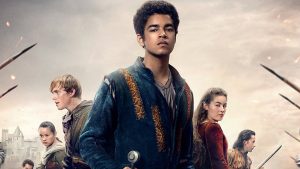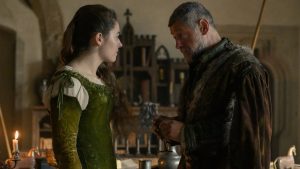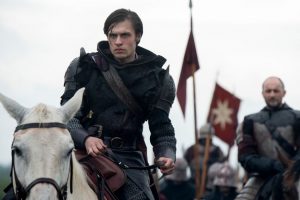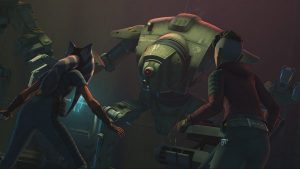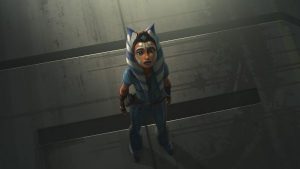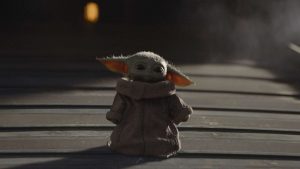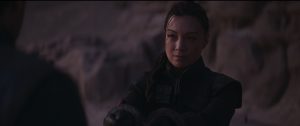A number of Marvel fans have been worried – understandably, to some extent – that the big budgets for the upcoming slate of Marvel Disney+ series won’t be enough to keep the shows from looking “too TV”, by which I assume they mean cheap and small-scale. The first trailer for WandaVision, which some viewers didn’t understand was intentionally aiming to replicate the low-budget practicality of classic sitcoms, only underscored those fears. But if nothing else, the first trailer for The Falcon And The Winter Soldier should be enough to convince even the most skeptical critic that these series will maintain a high level of quality, and cinematic visuals of which most movies would be lucky to boast.

The Falcon And The Winter Soldier feels the most like a traditional Marvel action movie out of all the Disney+ series we’ve heard about so far, but that’s not a knock on the series by any means. Rather, it feels like a continuation of the very best Marvel movies, specifically the latter two installments in the Captain America trilogy – as it should, since it follows Cap’s sidekicks in the aftermath of his surprise retirement and decision to pass the torch (or, well, the shield) to his longtime friend Sam Wilson. The fight scenes are fast-paced, tightly-edited, and visceral; the tone is that of an atmospheric spy thriller, with some natural buddy cop humor; and the characters are heroes we’ve grown to love – Wilson’s Falcon and Bucky Barnes’ Winter Soldier.
From what we’ve heard, the main conflict of The Falcon And The Winter Soldier revolves around a plot to usurp Wilson, a Black man, as the rightful owner of the shield and the new Captain America, by replacing him with a jingoistic white southern guy named John Walker. However, the trailer is still hiding many details pertaining to that storyline, and instead devotes significant screentime to a completely new supervillain played by Solo actress Erin Kellyman – whom we see sporting a black mask marked with a red handprint, and leading a team of ruffians, believed to be the anarchist militia group known as Flag-Smasher. It’s possible Kellyman’s character is also using the name Flag-Smasher as her supervillain identity: in the comics, this character is male, and a frequent opponent of Captain America, who represents everything he most despises. John Walker, on the other hand, appears just once in the entire trailer: making his debut at a hometown football game, to thunderous applause.

That being said, there’s no reason to fear that the series’ extremely political through-line has been watered down to avoid controversy: Falcon’s first line in the trailer addresses how the legacy of Captain America’s shield is “complicated”, an obvious reference to the storyline in the comics – which the show is believed to feature prominently – where an early and dangerous prototype of the Super Soldier serum was tested on Black men during World War II by racist doctors, mirroring the real-life horrors of the infamous Tuskegee “Study”, during which African-American men were subjected to syphilis and denied treatment even after it became available. Just as Loki is venturing into the realm of historical fiction, it seems The Falcon And The Winter Soldier will do the same, including important social commentary on issues of racism, white supremacy, and white privilege.
The trailer’s second biggest reveal has to be our first look at the island of Madripoor, a fictional nation located in the Indian Ocean and home to frequent battles between Marvel’s most notable heroes and villains in the comics. The Falcon And The Winter Soldier makes it looks very futuristic, a bit like Cyberpunk 2077‘s Night City, with a dark and mysterious criminal underworld supporting towering skyscrapers and hotels. Wilson and Barnes’ business in Madripoor is still unknown, but they appear to be undercover – probably hunting an enemy or looking to strike a deal with somebody shady. To fit in with Madripoor’s clubbing scene, it seems Wilson has a brand new outfit, including a bright red jacket with golden tracery that we’ve seen in set photos, but which looks even better under proper lighting. Bucky’s idea of a disguise is a basic haircut (which, to be fair, looks pretty decent now); at least Wilson has some style.

The action set-pieces are to die for (and I assume that, in a series as gritty as this one looks to be, lots of characters will die): we’ve got motorcycle chases, fights on top of trucks, brutal one-on-one duels, and plenty of high-flying stunts thanks to Falcon’s trusty pair of wings, which look more fast and flexible than ever before. To tell the truth, I’ve always thought Falcon’s wings looked cumbersome in past Marvel appearances – so whether he’s actually tinkered with the suit to produce better results, or if the CGI is just better, this is definitely an upgrade. Bucky’s vibranium arm, courtesy of Wakanda, is still…just an arm: I hope we get to see some of its other cool features at some point, because Wakandan tech is usually a lot more reliable.
Suffice it to say, there’s a lot of stuff I think is still being kept from us, and this first look is just the tip of the iceberg. The Falcon And The Winter Soldier will premiere in March, leaving plenty of time for us to get another trailer, presumably while WandaVision is still airing.
Trailer Rating: 8/10
